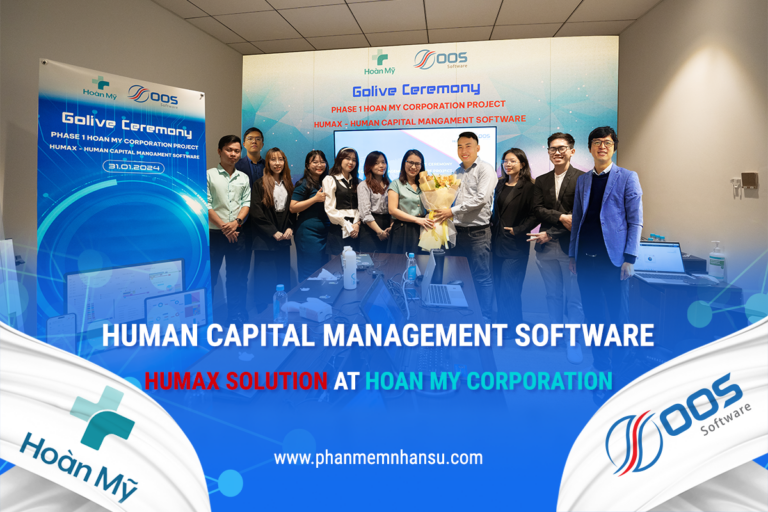As the first step of human resources when setting foot in the business, onboarding – the basic process is often said to be without many problems.
But the hidden costs are many risks that managers may not be aware of.
Hidden costs? – Unexpected problems of businesses
Implicit cost (also known as implicit cost, imputed cost, implied cost, or notional cost) is defined as any cost that has been incurred but is not obvious, does not necessarily need to be filed or reported as a separate expense.
In corporate finance decisions, hidden costs should always be considered when coming to a decision on how to allocate a company's resources. The bulge of hidden costs means inefficient use of resources that will get the business into trouble.
From an economic perspective, hidden costs help managers calculate overall economic profit, while current costs are used for accounting profit purposes. Because they are not accounted as current costs, the risks of hidden costs have not been recognized by many businesses.
To learn more about hidden costs, let's look at a specific problem that every business must face: Hidden costs in the onboarding process of new employees at the enterprise.
Referring to the onboarding process, this can be considered as the final step of a recruitment process. Closing the series of human resource challenges from selecting resumes, interviewing, performing tests if any, personnel officially confirmed to be successful will have the first step of being onboard at the enterprise.
Lots of hidden costs in the onboarding process of new employees
Personnel entering the company, when performing onboarding, will almost go through the following stages:

- Pre-onboarding
- The first working day
- Probation period (1 - 2 months)
- Post-trial period
Let's look at each stage to analyze what the business has spent on employees at each stage:
1.Pre-onboarding:
Cost of paperwork and administrative time
Onboarding requires a lot of paperwork: benefits registration, tax return forms, probationary contracts, employment contracts, employee handbooks, confidentiality agreements, etc. Paper and ink costs for this process are expenses. tangible fee, it is even considered too small to declare. The rest, the actual or hidden costs that we need to look for stem from the time it takes to complete the paperwork and handle administrative procedures from first the employees themselves, followed by the employees themselves. coming from the recruitment department, administration - accounting, finance, ... - the responsible places related to those documents.
According to a calculation from Glassdoor, let's say a hiring manager earns $25 an hour. You hire 50 new employees each year, each of which takes 10 hours of administrative time to process their documents. That adds up to $12,500 per year – not a small number that requires consideration from all companies, not just the big one.
2.Probation period
Cost of using facilities
For a new employee, there will be a number of necessary items that the company prepares for them to start work: employee card, uniform, personal computer, ... In addition, with some businesses consider Respecting the onboarding process, they often give employees some gifts to express their appreciation and increase motivation for that employee.
The “hidden cost” part here is not the value of the facilities but the cost of using them during the probationary period. Imagine the company has a lot of employees onboard at the same time, the cost of the team is definitely the cost of equipment for this team during that period. In case when an employee quits halfway or is not approved for a full-time employee, the cost of temporary facilities is wasted.
-
Cost of “productivity” of new employees
When you hire someone new, chances are they won't be as productive on their first day on the job. In fact, it can take several months for them to feel comfortable in their new role. According to one study, it can take from 8 to 26 weeks for a new employee to reach their peak productivity. at work environment. Before they reach that time, the business is actually losing costs – employees are consuming the company's costs more than the value they bring in. After this period, when they promote their highest capacity and productivity, they begin to make a profit (ROI > 0) for the company. This is called the break-even point.

The more complex the job – correspondingly, the more senior the employee, the longer it takes to get used to. Conceivably, a new salesperson will reach breakeven sooner than a new senior manager. Of course, this number will also be influenced by the candidate's previous experience.
The more familiar the candidate is with the workflow, the more experience they have, the more natural the transition and the shorter the adaptation time. Research also shows that on average, it takes a company between 1 – 2.5% of their total revenue to bring a whole new employee on board.

Therefore, the hidden cost for this part is the cost of training employees so that they reach a certain "maturity", to the point of being ready to create value for the business.
3.The period after the employee has come to work
At this stage, there are two possibilities for HR:
- Personnel ends the probationary process, is approved to an official position, continues to accompany the enterprise.
- Personnel quit during the probationary period or after 1-3 months of trying at the position of the enterprise
- Cost of time when onboarding process is lengthy
An overly simple onboarding process leads to a lack of information or expertise for new employees, while a cumbersome onboarding process frustrates employees. If the onboarding process itself feels ineffective, they are actually taking more time, which is the business's time - or the "opportunity cost" that is missing.

- Expenses when employees quit
The hidden costs mentioned above all contribute to the costs that businesses incur when employees leave. If you fall into this situation, you will lose the effort of training a new employee to replace the employee who left, or in other words, the hidden cost that the business has to bear has doubled.
In an article on employee retention, Josh Bersin of Deloitte outlines factors a business should consider when calculating the "real" cost of losing an employee. These factors include:
- The cost of hiring new employees includes the costs of advertising, screening, interviewing and recruiting.
- Cost of onboarding a newcomer, including training and management time costs.
- Productivity costs: it may take a new employee 1-2 months to reach the productivity of an existing apprentice.
- Employees leave jobs, positions are vacant, there is no person in charge, the remaining employees become overloaded with workload.
- New employees take longer and are often not very good at solving problems.
- Cultural Impact: Whenever someone leaves, others spend time wondering why.
One of the reasons why the true cost of an employee is unclear is that most companies don't have systems in place to track the costs of finding, screening, interviewing, recruiting, orienting, and training candidates. creation, productivity, administrative costs, etc. in the process of working with that employee. In fact, it is necessary to cooperate between departments (HR, finance, operations, ...) to have a way to measure and have a reporting mechanism to control this cost flow if you do not want to lose the recruitment budget. enterprise use.
How to minimize hidden onboarding costs for businesses
1.For paperwork costs:
A few suggestions to help you reduce paperwork costs:
- Standardize the paperwork process
The administrator can provide a ready-made process with the names of the necessary procedures for personnel to visualize. Information such as contact person, next step, support place, etc. will help newbies be less confused.
- Digitization of documents is possible
Documents on company policy, departmental policy, training policy, capacity assessment policy, etc. are documents that can be completely digitized.
Enterprises should have an electronic library to store these documents so that employees can easily search and refer to them at any time. This digitization will ensure their benefits and reduce the workload of the Human Resources department without having to spend too much time instructing or explaining to newcomers.
- Require new employees to complete their paperwork before the start date
In this way, they won't waste time filling out forms, but spend that valuable time learning professional experiences that serve their jobs. According to a report from Aberdeen, up to 53% of the world's best companies today assign responsibility to their employees to perform these tasks as part of onboarding before the first day on the job.
For facility usage costs and employee exit costs
The risk of losing the cost of using the facility occurs when employees leave, so the only way to limit this cost is to reduce the turnover rate of new employees, in other words, maximize the potential "keep people".
- Build a strong and consistent culture for your business
Corporate culture is what helps employees reflect when they look at it, is the reason they stay and contribute. Corporate culture also helps to improve team spirit, helps individuals maintain their own heat, and helps the team stick together.
Hire the right people There are always outstanding individuals who have a personality that is different from the culture at the company. Recruiting individuals who fit the corporate culture and core values of the company is very important, helping both the recruiter and the candidate not waste time wondering or doubting each other, strengthening the spirit of the candidate. employees, reducing the possibility of leaving the job from the candidate.
- Provide guidance and in-depth training for employees
High-performing employees tend to want to learn to improve and develop more.
To retain employees, businesses need to take measures to help employees be flexible in their current work. Make sure they have options for higher positions and gain more experience.
- Always support and support employees
When employees feel that they always have help from the organization, they become more secure and more engaged.
- Diversify benefits
Attractive salary and bonus policies have the effect of retaining talent. In addition, incentive policies that exceed performance, flexible leave, remote work or gift ideas without money also help businesses "score" in the hearts of candidates.
- flexible
The regulations in the enterprise are set out to be strictly followed by the collective, however, impossible reasons from employees can be considered and flexibly handled.
If you expect your staff to answer a customer's phone at seven o'clock on a Friday, you can also sympathize with the employee arriving late one morning or needing to leave early an afternoon. .
The purpose of employee retention is to make them feel valued and feel valued by the company.
3.For employee time cost and productivity cost
Suggested solution: Accelerate the process of "getting into the wheel" of personnel with the training roadmap of the enterprise. A detailed, scientific training roadmap helps employees have a clear view of their future positions, moreover, it helps to strengthen trust in the organization.
Imagine with a pre-drawn onboard process, standardized and unified, with clear stage division, the onboard work of personnel will be controlled through all stages, in which There is cross-departmental cooperation between departments.
By this time, personnel will be much less confused even though there is no superior to "hold hands and just work".
Example: For Marketing, understanding customer insights is very important. To do this job, new employees of the Marketing department need to have a walk in the market, talk to customers – a task that the Sales department knows very well.
Marketing department leaders therefore create a stage "Going to meet customers with Sales" in the onboarding process of their department staff. With the “add collaborator” feature, the Sales staff is delegated along with the new employee's tasks.
The new employee is responsible for completing this stage during his or her onboarding process without the confusion of which department to contact.
Employees perform and tick done when completed, the results are automatically updated to report to superiors
You can even create your own Problem Solving process, to automatically pick up work that wasn't completed in the previous three processes. If employees feel that a stage or task in the onboarding process doesn't know how to be effective, their leader will also know where they are having problems.
Ending
Onboarding is a process that businesses must operate properly if they want to build a strong staff.
If you invest weeks of time and effort in only to see a new employee leave two months later, you've essentially wasted all the resources of the process. If this happens several times per year, its impact on the company's finances is not small.
So it's the leader's role to have a sound strategy with this process to ensure the smooth running of the business and the soundness of the hiring budget.























